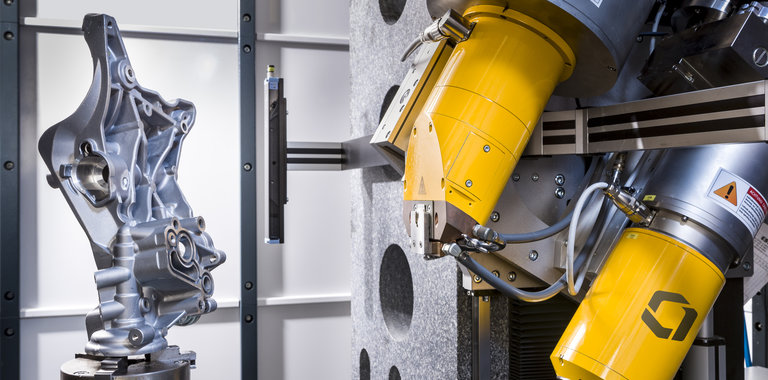
What is a high voltage generator?
Conventional (trans)portable X-ray equipment for use up to approximately 300 kV are pro-
vided with step-up HT transformers, rectifiers and smoothing capacitors. The X-ray tube
and the circuitry of this equipment are usually placed in an insulated tank. In most cases
these tank type sets use oil for insulation and cooling and weigh approximately 60 kg.
Gas is used when weight is important; the set than weighs approximately 30 kg.
Figure 3-5 shows an integrated
(all-in-one) tank set for 300 kV. At
voltages over 300 kV housing eve-
rything in one tank becomes very
difficult because the high voltage
insulation would be inadequate.
Equipment up to 450 kV operating
on direct current is connected to a
separate high tension (HT) supply
unit by means of HT leads, connec-
tors and plug, see figure 4-5. As a
result this equipment is bigger and
heavier than “all-in-one” tank sets and mostly meant for stationary or semi-ambulant use.
A 300 kV tank set and a 450 kV direct current X-ray tube (the latter with separate high
voltage power supply) are of roughly the same dimensions.
Most tank sets are connected to a mains power supply with a frequency of 50 or 60 Hz. At
this frequency the supply voltage can be transformed upward.
This is followed by rectifying, which occurs in various forms. With some sets the X-ray tube
itself functions as rectifier, so called single-phase rectifying. If there is no smoothing
applied, considerable changes in voltage per cycle of alternating current will occur.
This periodic and greatly varying high voltage affects the intensity and spectrum of the
radiation generated, see in the section about tube voltage and tube current.
The intensity of radiation is increased by double-phased rectifying and varying degrees of
smoothing. At very low voltage ripple these sets are considered constant potential (CP)
equipment.
In the latest types of tank sets the mains frequency is first converted to a high frequency
alternating current and only then transformed upward, which makes it easier still to
smooth the ripple. At very high frequencies, up to 50 kHz, smoothing is hardly necessary
anymore and such x-ray sets can be called CP systems. Additional features may be built in,
for example an automatic warm-up facility, see note below. This type of circuitry with
advanced electronics leads to a higher degree of reliability and significant space and weight
reduction compared with earlier power supply systems. As a result of the various improve-
ments that have gradually been implemented, present day AC-X-ray sets perform as well as
true CP sets.
Note: Because of the high vacuum prevailing inside the X-ray tube, it carefully has to be warmed-up
after a period of rest. During rest the vacuum deteriorates. This warm-up procedure has to be done
in accordance with the supplier’s instructions, to prevent high voltage short-circuiting which might
damage the tube or render it useless.



